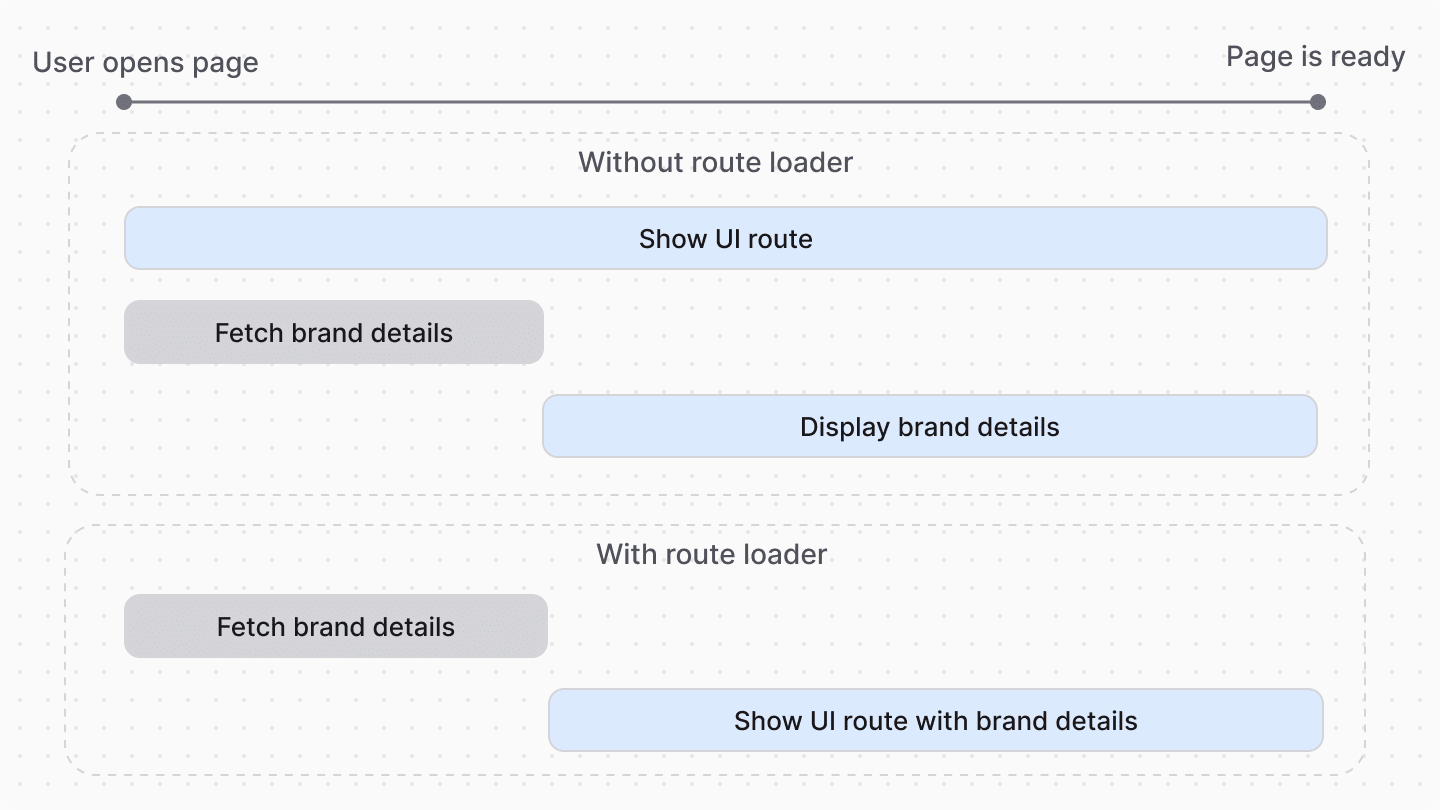4.5. Admin Routing Customizations
The Medusa Admin dashboard uses React Router under the hood to manage routing. This gives you more flexibility in routing-related customizations using React Router's utilities, hooks, and components.
In this chapter, you'll learn about routing-related customizations that you can use in your widgets, UI routes, and settings pages using React Router.
react-router-dom is available in your project by default through the Medusa packages. You don't need to install it separately.Link to a Page#
To link to a page in your admin customizations, you can use the Link component from react-router-dom. For example:
1import { defineWidgetConfig } from "@medusajs/admin-sdk"2import { Container } from "@medusajs/ui"3import { Link } from "react-router-dom"4 5// The widget6const ProductWidget = () => {7 return (8 <Container className="divide-y p-0">9 <Link to={"/orders"}>View Orders</Link>10 </Container>11 )12}13 14// The widget's configurations15export const config = defineWidgetConfig({16 zone: "product.details.before",17})18 19export default ProductWidget
This adds a widget to a product's details page with a link to the Orders page. The link's path must be without the /app prefix.
Fetch Data with Route Loaders#
In your UI routes and settings pages, you may need to retrieve data to use in your route component. For example, you may want to fetch a list of products to display on a custom page.
The recommended approach is to fetch data within the UI route component asynchronously using the JS SDK with Tanstack (React) Query as explained in this chapter.
However, if you need the data to be fetched before the route is rendered, such as if you're setting breadcrumbs dynamically, you can use a route loader.
To fetch data with a route loader:
- Define and export a React Router loader function in the UI route's file. In this function, you can fetch and return data asynchronously.
- In your UI route's component, you can use the useLoaderData hook from React Router to access the data returned by the
loaderfunction.
For example, consider the following UI route created at src/admin/routes/custom/page.tsx:
1import { defineRouteConfig } from "@medusajs/admin-sdk"2import { Container, Heading } from "@medusajs/ui"3import {4 useLoaderData,5} from "react-router-dom"6 7export async function loader() {8 // TODO fetch products9 10 return {11 products: [],12 }13}14 15const CustomPage = () => {16 const { products } = useLoaderData() as Awaited<ReturnType<typeof loader>>17 18 return (19 <div>20 <Container className="divide-y p-0">21 <div className="flex items-center justify-between px-6 py-4">22 <Heading level="h2">Products count: {products.length}</Heading>23 </div>24 </Container>25 </div>26 )27}28 29export default CustomPage
In this example, you first export a loader function that can be used to fetch data, such as products. The function returns an object with a products property.
Then, in the CustomPage route component, you use the useLoaderData hook from React Router to access the data returned by the loader function. You can then use the data in your component.
Route Loaders Block Rendering#
Route loaders block the rendering of your UI route until the data is fetched, which may negatively impact the user experience. So, only use route loaders when the route component needs essential data before rendering, or if you're preparing data that doesn't require sending API requests.
Otherwise, use the JS SDK with Tanstack (React) Query in the UI route component as explained in the Tips chapter to fetch data asynchronously and update the UI when the data is available.

Access Route Parameters in Loader#
You can access route parameters in the loader function. For example, consider the following UI route created at src/admin/routes/custom/[id]/page.tsx:
1import { Container, Heading } from "@medusajs/ui"2import {3 useLoaderData,4 LoaderFunctionArgs,5} from "react-router-dom"6 7export async function loader({ params }: LoaderFunctionArgs) {8 const { id } = params9 // TODO fetch product by id10 11 return {12 id,13 }14}15 16const CustomPage = () => {17 const { id } = useLoaderData() as Awaited<ReturnType<typeof loader>>18 19 return (20 <div>21 <Container className="divide-y p-0">22 <div className="flex items-center justify-between px-6 py-4">23 <Heading level="h2">Product ID: {id}</Heading>24 </div>25 </Container>26 </div>27 )28}29 30export default CustomPage
Because the UI route has a route parameter [id], you can access the id parameter in the loader function. The loader function accepts as a parameter an object that has a params property containing the route parameters.
In the loader, you can fetch data asynchronously using the route parameter and return it. Then, in the route component, you can access the data using the useLoaderData hook.
Other React Router Utilities#
Route Handles#
In your UI route or any route file, you can export a handle object to define route handles. The object is passed to the loader and route contexts.
For example:
You can also use the handle object to define a breadcrumb for the route. Learn more in the UI Route chapter.
React Router Components and Hooks#
Refer to react-router-dom’s documentation for components and hooks that you can use in your admin customizations.